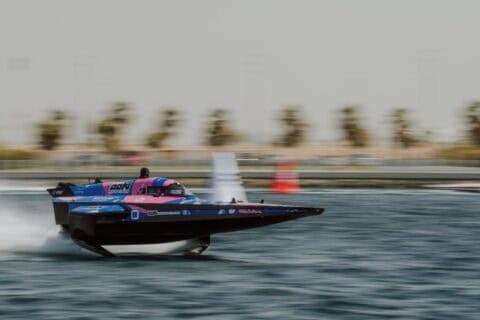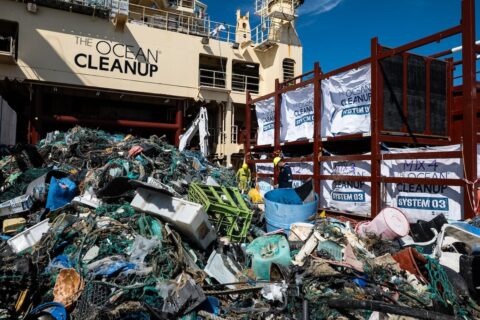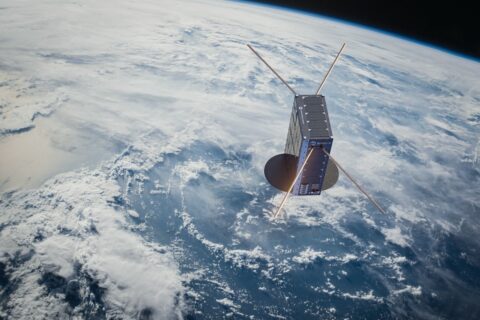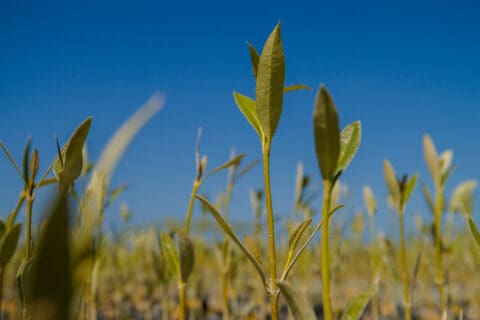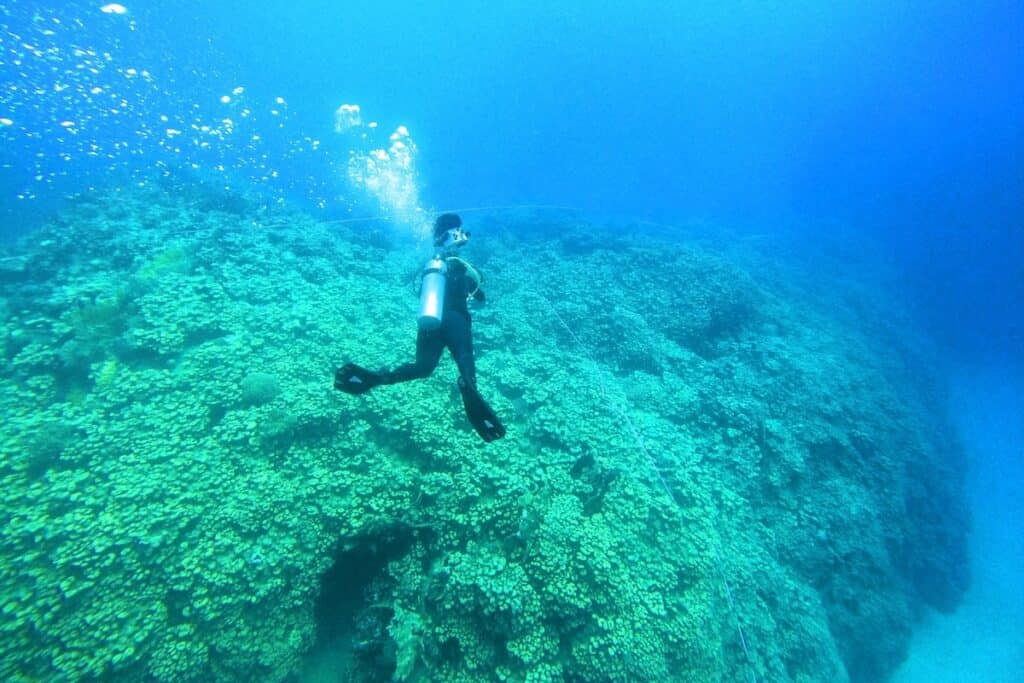
Like finding lost natural treasure, discovery has been made of a giant ancient coral colony, the biggest ever in the Red Sea and a formation so old it may even date from the time of Genghis Khan, up to 800 years ago.
Developer Red Sea Global (RSG) announced this scientifically significant find located within the waters of AMAALA, its regenerative tourism destination soon to open on the northwestern coast of Saudi Arabia.
Rivalling the size of the current world record holder (a 32mx34m colony in the Pacific), this remarkable new find in the Red Sea stretched to the length of six to eight London buses end to end (26-36x21m).
Drawn from the Pavona species, it is the largest coral colony of its type documented in the Red Sea to date.
Time capsule of information
This rediscovered natural wonder could form a unique highlight for tourists on diving excursions. To minimise potential impacts, access at AMAALA would only be permitted in line with RSG’s responsible ethos.
The ecological significance attached to a coral discovery of such extraordinary dimensions, though, extends beyond the Red Sea, says Ahmed Alansari, Head of Environmental Protection and Regeneration at RSG:
“It is critically important to protect our coral reefs. These giants represent a time capsule of information, providing the ideal tools for tracing past oceanographic transformations. Understanding how coral has survived for so long will be crucial for protecting other reefs in the Red Sea and potentially all over the world, for generations to come.”
From the age of Genghis Khan
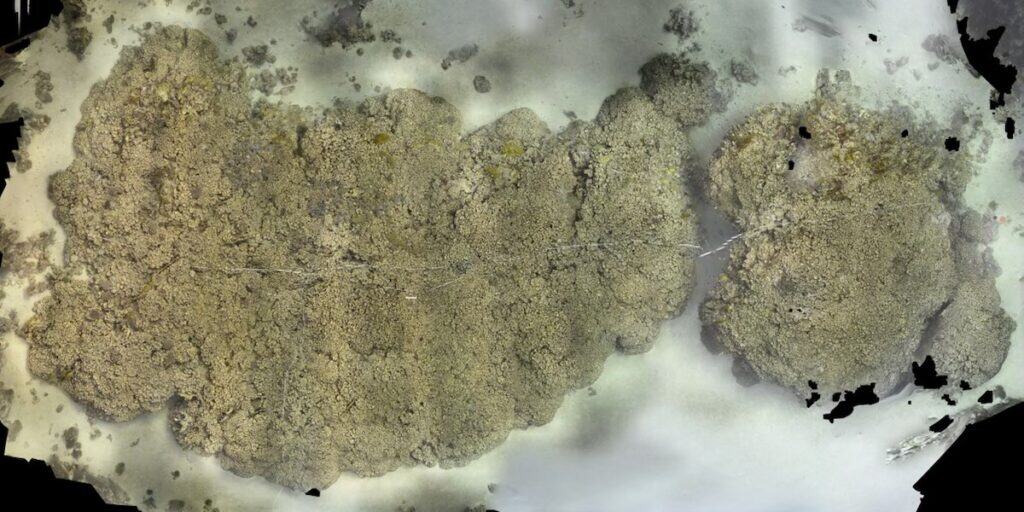
Determining the age of these giant corals with minimal impact is challenging due to the invasive nature of accurate techniques and lack of published growth rates for this particular species in the Red Sea.
However, estimations have been made based on the coral’s size, species growth rates in the Pacific, and results from photogrammetry — RSG stitched together 3,000 images to create a precisely scaled 3D model.
Using these tools, the coral cluster is estimated to be between 400 and 800 years old, which may be even older than the world’s largest coral recently discovered in the Solomons at 300-500 years old.
If upper estimates hold true, this coral began growing around the time when Genghis Khan invaded China.
Researchers from RSG and King Abdullah University of Science and Technology (KAUST) will help pinpoint the age more accurately and provide insights into environmental conditions in which the coral has thrived.
Giants of marine conservation
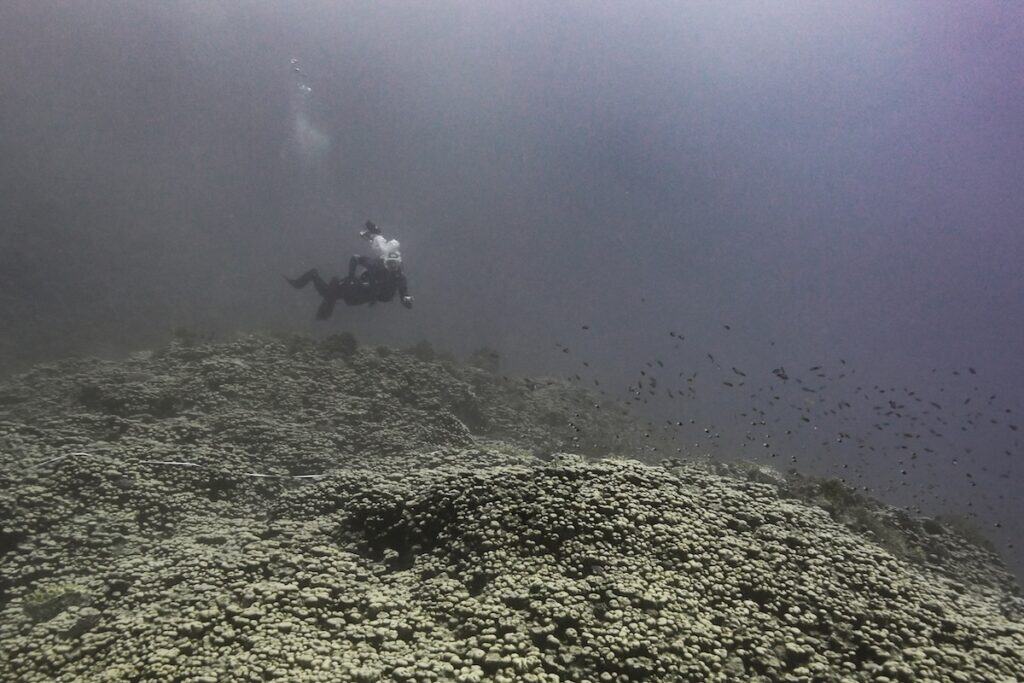
Coral in the Red Sea is known for being particularly resilient, having undergone a long process of natural selection, adapting genetically to the warmer waters and higher salinity levels.
This colony will be subject to ongoing monitoring and research to understand what makes these giants so resilient to multiple stressors over long time periods and help inform conservation efforts for other reefs.
The two RSG scientists who originally discovered the giant Pavona coral colony — Rhonda Suka and Sylvia Jagerroos — are now leading on its mapping and documentation. The find is a source of hope, says Suka:
“Finding such an invaluable specimen was a truly mind-boggling experience. This colony’s resilience gives us hope for the continued success of corals in the Red Sea, in the face of increasing environmental and anthropogenic stress.”
Such marvels of marine life are known to exist, but finding them is something else, adds Jagerroos:
“A coral this massive is incredibly rare — like stumbling upon a northern white rhino in the wild.”
Mapping these giants is an important part of conserving them — and this is being done on a global scale through the Map the Giants project run by the MaRHE Center, at the University of Milano-Bicocca.
The project classes giants as anything larger than 5m, mapping the largest coral colonies in the world to reveal their resilience to environmental changes, turning them into monuments to marine conservation.
This is the second colony RSG has submitted to the project in the last few months.
Lifestyle, regeneration and wellness
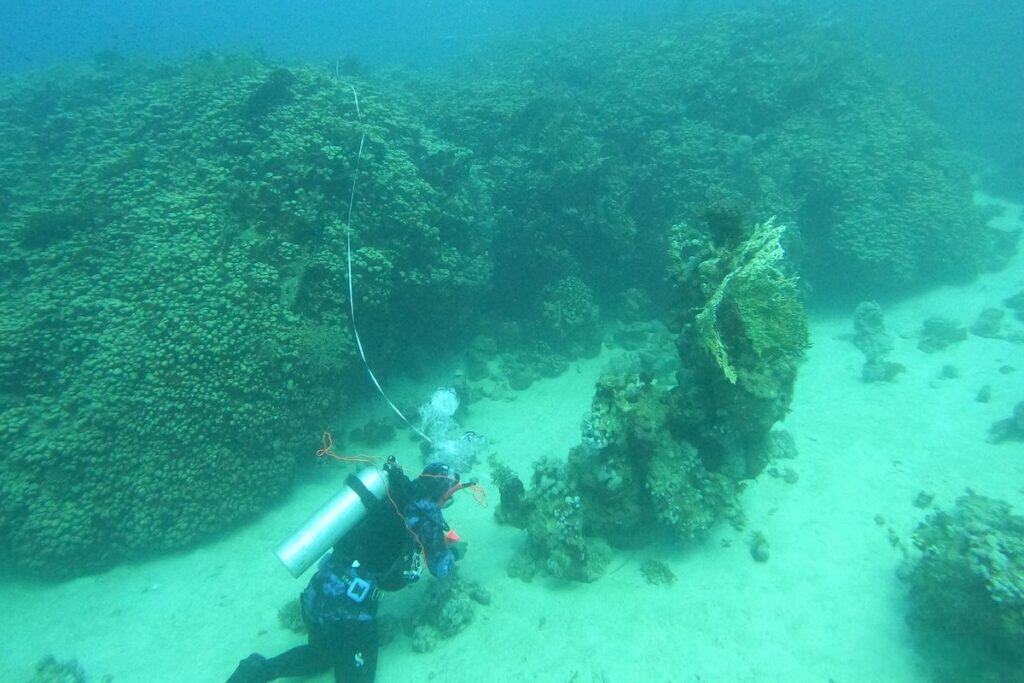
Red Sea Global (RSG) is a vertically integrated real estate developer with a diverse portfolio across tourism, residential, experiences, infrastructure, transport, healthcare, and services. This includes the luxury regenerative tourism destinations The Red Sea, which began operating in 2023, and AMAALA, which is set to welcome its first guests later this year. A third destination, Thuwal Private Retreat opened in 2024.
Located along the northwestern coast of the Red Sea in Saudi Arabia, alongside one of the world’s most pristine environments, AMAALA focuses on coastal lifestyle with regeneration and wellness at its core.
Launching with more than 1,400 hotel rooms across eight luxury resorts, it will attract some of the most renowned wellness operators globally, with programmes tailored to diverse lifestyles and wellbeing needs.
Two hallmark features at AMAALA will be the Corallium Marine Life Institute — an educational and scientific research centre — and the AMAALA Yacht Club, destined to become an international hub for luxury yachting.
RSG is wholly owned by the Public Investment Fund (PIF) of Saudi Arabia. A cornerstone of the Vision 2030 ambition to diversify the Kingdom’s economy, RSG is working towards a more sustainable future, showing how responsible development can uplift communities, drive economies, and enhance the environment.
Further Reading:
- More about Red Sea Global (RSG); its The Red Sea, AMAALA and Thuwal Private Retreat destinations;
- More on the Map the Giants project run by the MaRHE Center, at the University of Milano-Bicocca;
- Also on SustMeme, Nature-based solutions on the rise in Africa;
- Also on SustMeme, Milestone reached for cleanup of ocean plastic;
- Also on SustMeme, Nursery to help plant 50 million mangrove trees;
- Also on SustMeme, How regenerative tourism can become a green swan (Guest Blog);
- Also on SustMeme, Leisure and tourism must race to revive our oceans (Guest Blog).
Check out the full archive of stories under the SustMeme Biodiversity & Conservation Channel, now available to Sponsor.

